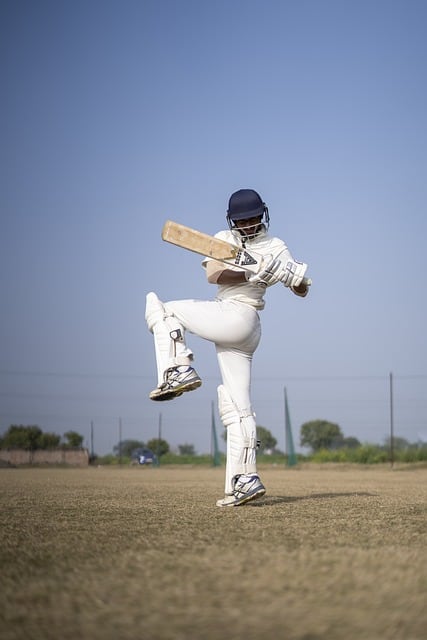Cricket, a sport deeply rooted in tradition, has seen significant advancements in equipment over the years. One such vital piece of equipment is the cricket bat. From humble beginnings to the sleek, high-performance designs of today, cricket bats have undergone a remarkable evolution.
In this comprehensive guide, we will delve into the fascinating journey of cricket bat designs, exploring their historical significance and the key innovations that have shaped the modern bat.
Evolution of Cricket Bat Designs
To truly appreciate the evolution of cricket bat designs, let us take a chronological look at the different incarnations and their significant features. The following table provides a comparative analysis of key bat designs throughout history:
| Bat Design | Period | Material | Key Features |
|---|---|---|---|
| Primitive Club | Medieval Period | Willow or Ash | Simple wooden club, no defined shape or handle |
| Straight Blade | 17th to 18th Century | Willow | Straight blade with slight taper, minimal shaping |
| Hinged Blade | 19th Century | Willow | Blade split into two sections, hinged at the handle |
| Scoop Bat | 1960s | Willow | Concave back of the blade to enhance power and control |
| Heavy Blade | 1980s | Willow | Thicker edges and larger sweet spot for increased power |
| Lightweight Bat | 1990s | Composite | Use of lighter materials for improved maneuverability |
| Modern Design | Present Day | Composite | Innovative shaping, lightweight, large sweet spot |
Click here to read my article called How Much Does A Cricket Bat Weigh for more info on bat weight ranges and specs.
Primitive Club
- Period: Medieval Period
- Material: Willow or Ash
- Key Features: Simple wooden club, no defined shape or handle.
Straight Blade
- Period: 17th to 18th Century
- Material: Willow
- Key Features: Straight blade with slight taper, minimal shaping.
Hinged Blade
- Period: 19th Century
- Material: Willow
- Key Features: Blade split into two sections, hinged at the handle.
Scoop Bat
- Period: 1960s
- Material: Willow
- Key Features: Concave back of the blade to enhance power and control.
Heavy Blade
- Period: 1980s
- Material: Willow
- Key Features: Thicker edges and larger sweet spot for increased power.
Lightweight Bat
- Period: 1990s
- Material: Composite
- Key Features: Use of lighter materials for improved maneuverability.
Modern Design
- Period: Present Day
- Material: Composite
- Key Features: Innovative shaping, lightweight, large sweet spot.
Major Cricket Bat Manufacturers
The cricket bat manufacturing industry is highly competitive, with several renowned companies vying for the top spot. Here are some of the biggest and best cricket bat manufacturers:
- Gray-Nicolls
- Gunn & Moore (GM)
- Kookaburra
- New Balance
- Spartan
- SS Ton
- MRF
- SG
- Puma
- Adidas
Below is a table that compares these cricket bat manufacturers based on various factors:
| Manufacturer | Founded | Headquarters | Notable Models | Bat Specialties | Quality |
|---|---|---|---|---|---|
| Gray-Nicolls | 1855 | England | Classic Collection, Powerbow Range | Mid-to-High Sweet Spot | High |
| Gunn & Moore | 1885 | England | Diamond, Noir, Mana | Thick Edges | High |
| Kookaburra | 1890 | Australia | Kahuna, Ghost, Blaze | Lightweight | High |
| New Balance | 1906 | United States | DC, TC, TC 1260 | Superior Balance | High |
| Spartan | 2008 | India | CG, MSD, CHAMP | Unique Shape | High |
| SS Ton | 1969 | India | Ton Reserve Edition, Player Edition | Handpicked Willow | High |
| MRF | 1973 | India | Genius, Virat Kohli Signature | High Rebound Capability | High |
| SG | 1931 | India | Sunny Tonny, RSD Xtreme | Extended Sweet Spot | High |
| Puma | 1948 | Germany | EvoPower, Calibre 6000 | Innovative Technology | Medium-High |
| Adidas | 1949 | Germany | XT, Libro, Incurza | Lightweight | Medium-High |
Note: The “Quality” column refers to the overall quality of the cricket bats produced by the manufacturers, with “High” indicating excellent craftsmanship and performance, and “Medium-High” representing good quality but with some variations.
Please keep in mind that the rankings and opinions regarding the best cricket bat manufacturers may vary among players, as it often depends on personal preference and individual playing styles. The table provides a general overview of these manufacturers and their notable models, specialties, and overall quality.
Conclusion
The evolution of cricket bat designs reflects the quest for enhanced performance and player experience. From primitive wooden clubs to the sleek, modern designs of today, cricket bats have come a long way. Each era brought its own innovations, catering to the changing needs and demands of the game. Understanding this evolution can help cricket enthusiasts appreciate the craftsmanship behind their chosen bat and make informed decisions when purchasing one.
While the historical incarnations of cricket bats showcased gradual improvements, the modern-day designs incorporate cutting-edge technology, lightweight materials, and ergonomic shaping to optimize performance. As the game continues to evolve, cricket bat designs are likely to undergo further refinements, pushing the boundaries of power, control, and player experience.
Remember, selecting the right cricket bat involves considering personal preferences, playing style, and the specific requirements of the game format. By understanding the evolution of cricket bat designs, you can appreciate the artistry and engineering that goes into crafting these essential tools of the game.
Click here for an article called What Is A Cricket Wicket And Bails Made From to learn more about the other cricket equipment made from wood.
Also don’t forget that maintaining your bat and keeping moisture levels in check are equally important to cricket bat longevity.

